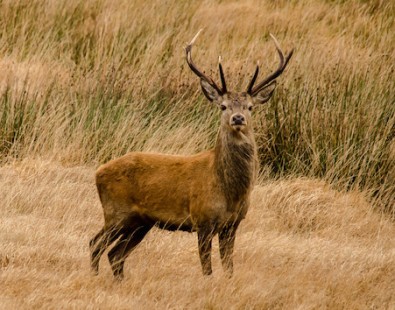15th February, 2016
If you venture out walking on Exmoor, you may be lucky enough to encounter a herd of red deer. These majestic animals are considered very special, ancient guardians of Exmoor.
It is thought that there have been red deer on Exmoor since pre-historic times. Exmoor was once a Royal Forest, and this meant a strict Forest Law to protect the deer. This 'protection' was not however of benefit to the deer themselves, only for the king, who liked a consistent supply of venison to eat and of course, a hunting ground to enjoy himself in.
Today there are about 3,000 of them on Exmoor, living on moorland and farmland, and using the woodlands for cover. Interestingly, red deer are the largest wild land animals in England. Adult stags stand about 115 cm at the shoulder, and are of course instantly recognisable for their iconic antlers. Only stags (male deer) grow antlers. Amazingly, they shed them each year in April and early May and immediately start to grow new ones.
New calves are born to their mothers in June and July, and are usually born in moorland vegetation or by the edge of woodland. For a few days after birth, the calf will lie quietly, well-camouflaged with dappled spots on its russet coat, looking like sunlight on dead bracken. If you do see a calf it is important not to touch it or the mother may abandon it. Soon it is strong enough to run with its mother and join the herd. They keep together for a year or more.
Red deer eat a wide variety of food, including young shoots of heather, whortleberry, brambles, saplings and grass. They also feed on acorns, fungi, berries and ivy - as well as farm crops.
They share the unique habitat of Exmoor with a number of other fauna, including Exmoor ponies (a native British breed), otters, birds of prey and some of the UK’s rarest butterflies and bats - as well as some unusual fungi! In fact, Exmoor is so important for wildlife that almost a third of the National Park is protected under UK and European law. So if you're a wildlife lover, it's the perfect place to visit. Why not take our 'Seashores and moors' walking holiday to see it for yourself?
Posted by: Iona Carter
Tags: Don't miss, Family fun, Insider info, Walking holidays

